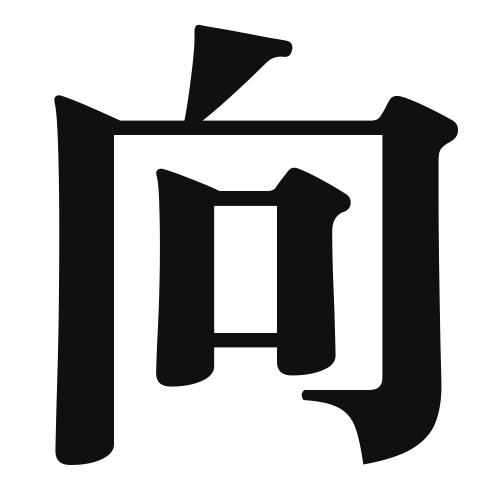1. Overview of Meaning
The kanji “向” (pronounced “kou” or “muku”) generally means “to face,” “to turn towards,” or “to direct.” It conveys the idea of orientation or direction towards something.
2. Formation and Radical
Formation of the Kanji: The kanji “向” is a phonetic-ideographic character (形声文字). It combines the radical for “direction” (the left part) with a phonetic component that suggests its pronunciation.
Radical: The radical for “向” is “向” itself, which relates to direction and orientation.
3. Examples of Usage
Common Words and Phrases: Some frequently used words that include “向” are:
- 向かう (mukau) – to head towards
- 向き (muki) – direction or orientation
- 向こう (mukou) – the other side or over there
Example Sentences in Daily Conversation:
- 彼は学校に向かっています。 (Kare wa gakkou ni mukatteimasu.) – He is heading towards school.
- この道は北向きです。 (Kono michi wa kita muki desu.) – This road is facing north.
4. Synonyms and Antonyms
Similar Kanji: A similar kanji is “対” (tai), which means “opposite” or “against.” While “向” indicates direction towards something, “対” suggests a relationship of opposition.
Antonyms: An antonym for “向” could be “背” (se), which means “to turn away” or “to back.” This represents the opposite action of facing or directing towards something.
5. Cultural and Historical Background
Relation to Japanese Culture: The concept of direction is significant in Japanese culture, often reflected in traditional practices and beliefs, such as the importance of facing certain directions during rituals.
Proverbs and Idioms: One common idiom is “向かい風” (mukaikaze), which means “headwind,” symbolizing challenges faced when moving towards a goal.
